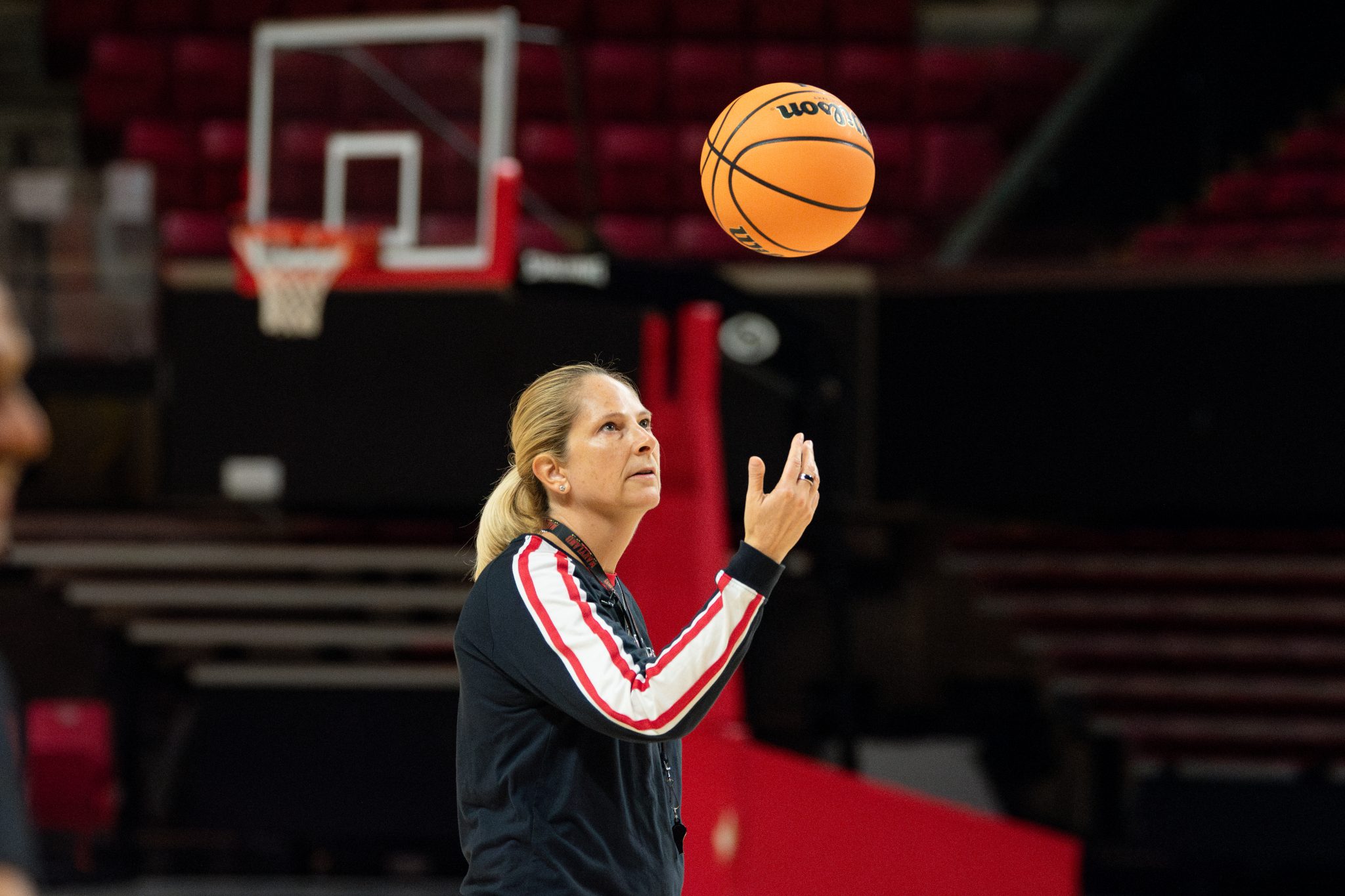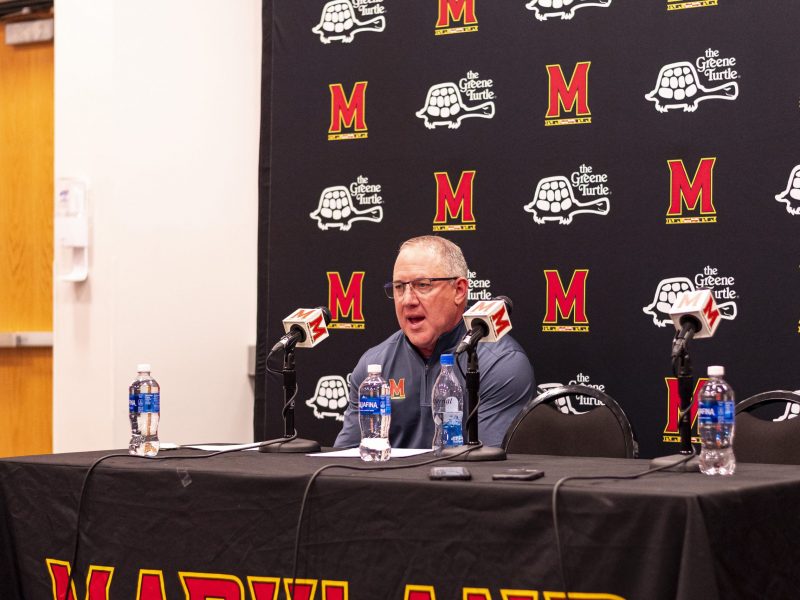Coach Brenda Frese said Maryland women’s basketball has “big shoes to fill” in 2023-24 at the team’s media day in October.
Last season’s Terps made the Elite Eight for the first time since 2015 and had two players selected in the first round of the WNBA draft. Frese said this year’s team understands that without Diamond Miller and Abby Meyers, it’ll have to operate as a collective to replicate the success of last season.
Maryland lost around 42 percent of last season’s scoring output when Meyers and Miller departed. This year’s roster doesn’t have a player like either former Terp — one who can reliably dominate offensively.
Frese is putting the scoring responsibility on everyone’s shoulders, with a “committee” approach to offense. But that’s how the coach thought last year’s offense would run before Miller and Meyers emerged as go-to scorers. This year’s plans could similarly evolve.
Eight of Frese’s last 10 teams had a player average more than 15 points per game. The two that didn’t — her 2014-15 and 2019-20 squads — saw at least four players average 11 or more points per game. The Terps went on to win the Big Ten regular season and tournament in both years.
[Maryland women’s basketball’s added depth presents new challenges for Brenda Frese]
The 2019-20 Terps were among Frese’s favorite teams because the spread-out scoring gave Maryland more depth.
“When you put it on three players those players bear the responsibility, but when they have an off night, you’re gonna more than likely lose,” she said. “I do think you’re a lot more dangerous of a team when you can spread it out and have more players that are capable of consistently being able to score the basketball.”
The day before Monday’s season opener, unknowns remain for Maryland.
No one on its current roster averaged more than 14 points per game last season. Shyanne Sellers was the only one to average double-digits, and is expected to grow as a scorer this season.
Frese also expects four graduate students to add more to the Terps’ offense after “waiting in the shadows” last season.
“I’m going to step into a bigger role. Other people are going to step into a bigger role,” one of them, Lavender Briggs said. “We know that if we just play hard and play together that nobody can stop us.”
Briggs is entering her second season at Maryland after transferring from Florida. But this will be her first fully-healthy campaign in College Park after spending last season recovering from hip surgery.
[Three takeaways from Maryland women’s basketball’s pair of preseason exhibitions]
Frese called Briggs’ preseason practices with the team “unbelievable.” Briggs’ newfound health means her bounce has returned, the coach added.
Another player who could help fill the void in Maryland’s offense is NC State transfer Jakia Brown-Turner.
While Brown-Turner only averaged 9.1 points per game last season, she showed her offensive potential as a sophomore. She averaged 13.5 points per game and eclipsed 20 points four times — all against conference opponents.
But even with those jumps, Frese knows she will need to continue learning about her team through the season.
The Terps won’t have a go-to option in the final minutes of late games. But Frese noted there wasn’t one last year either — and Maryland finished 9-3 in games decided by 10 or fewer points. Different players will get opportunities to earn that responsibility, and Frese believes multiple players on the team are capable of handling it.
“You learn about your team as the season unfolds,” she said. “I think that’s what makes this time of year so exciting is you’re constantly finding new things out about your players every time you step out on the floor.”



